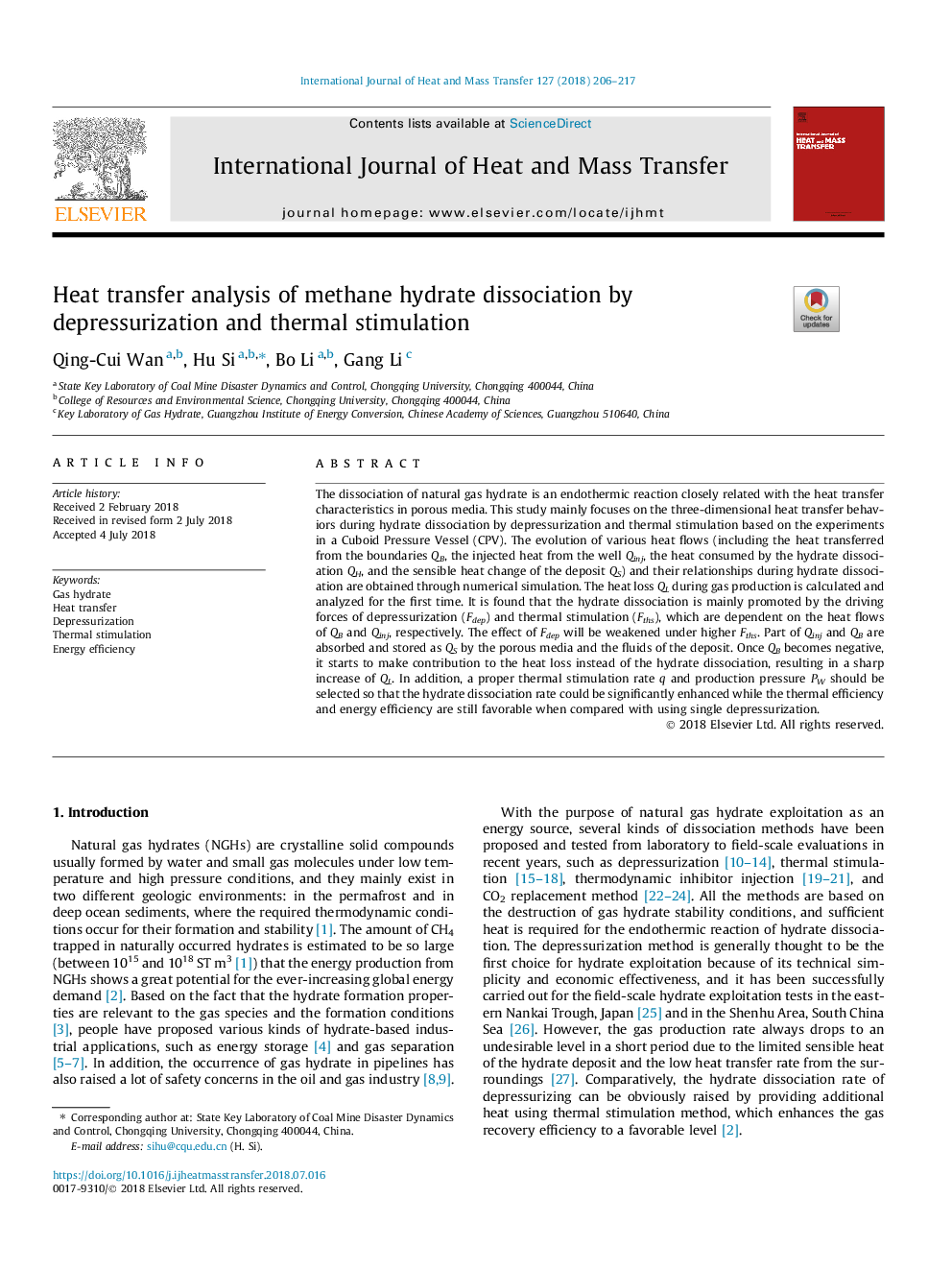| Article ID | Journal | Published Year | Pages | File Type |
|---|---|---|---|---|
| 7053665 | International Journal of Heat and Mass Transfer | 2018 | 12 Pages |
Abstract
The dissociation of natural gas hydrate is an endothermic reaction closely related with the heat transfer characteristics in porous media. This study mainly focuses on the three-dimensional heat transfer behaviors during hydrate dissociation by depressurization and thermal stimulation based on the experiments in a Cuboid Pressure Vessel (CPV). The evolution of various heat flows (including the heat transferred from the boundaries QB, the injected heat from the well Qinj, the heat consumed by the hydrate dissociation QH, and the sensible heat change of the deposit QS) and their relationships during hydrate dissociation are obtained through numerical simulation. The heat loss QL during gas production is calculated and analyzed for the first time. It is found that the hydrate dissociation is mainly promoted by the driving forces of depressurization (Fdep) and thermal stimulation (Fths), which are dependent on the heat flows of QB and Qinj, respectively. The effect of Fdep will be weakened under higher Fths. Part of Qinj and QB are absorbed and stored as QS by the porous media and the fluids of the deposit. Once QB becomes negative, it starts to make contribution to the heat loss instead of the hydrate dissociation, resulting in a sharp increase of QL. In addition, a proper thermal stimulation rate q and production pressure PW should be selected so that the hydrate dissociation rate could be significantly enhanced while the thermal efficiency and energy efficiency are still favorable when compared with using single depressurization.
Related Topics
Physical Sciences and Engineering
Chemical Engineering
Fluid Flow and Transfer Processes
Authors
Qing-Cui Wan, Hu Si, Bo Li, Gang Li,
